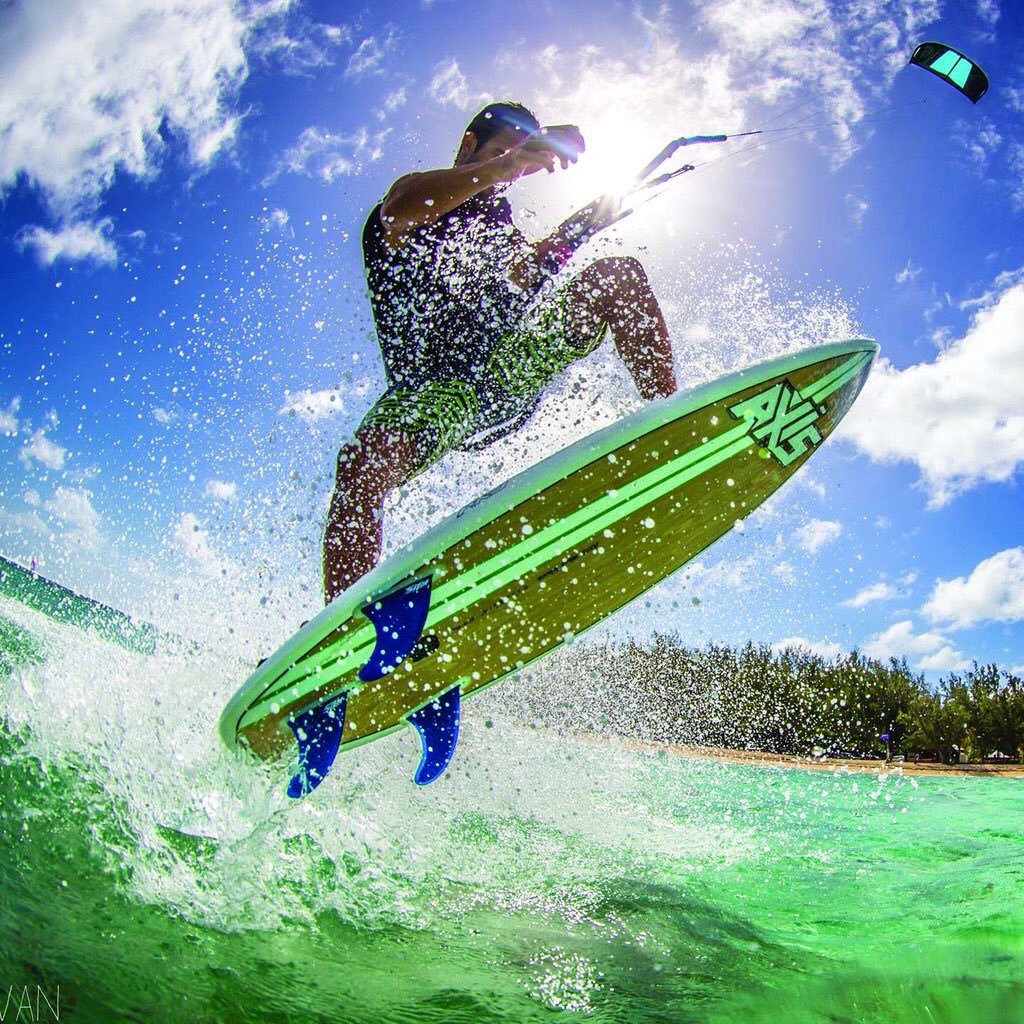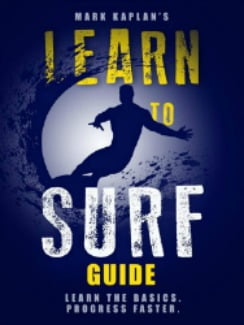Short Boards on Real Waves
Surfing short boards on real waves is where young surfers aim to be. The short board requires strong paddling, advanced techniques, courage, and agility. All of these are learned first on the soft top in foam waves before evolving to bigger foam waves and real waves.
The first advancement for foam surfers is learning the timing of real waves. The real wave forms and breaks in a seconds. Sitting in the line up, the surfer looks for the first rise of the wave and starts paddling to get into position. He lets the wave come under the surf board before paddling to catch it.

Catching Real Waves
The surfer lets the real wave rise over his head and paddles hard three times to get the nose pointed down the face. Then he puts his hands on the board and pops up. The size and steepness of the wave may determine how long he rides the face before bottom turning into the pocket.
There are two easier ways to get into the pocket. First the surfer paddles down the face and before he pops up he points the nose toward the pocket. Now when he pops up, he drives right into the pocket. The second method is to move away from the apex and point into the pocket as the wave rolls right or left.
Maneuvers in the Pocket
Three basic maneuvers are the bottom turn, the cut back, and accelerating. The bottom turn is used to get into the pocket off the face, turn up the face to do a trick, and to escape over the back in a collapsing wave.
The cut back is used to reverse direction to return to the power of the wave. It is used for style and used to stall waiting for the power to catch up. It is also used to rip the lip. As the surfer bottom turns and rises up the lip, he then reverses direction at the top in a cut back to go back down the face.
Accelerating is moving the nose of the board up and down the face for speed. This is used on a short board after turning into the pocket and after each maneuver. Whereas the long board can drive in the pocket, the short board needs to be accelerated.
Improving Short Board Performance
Getting better on the short board requires more time in the water. The stronger the surfer’s paddling is, the longer he can spend in sessions. Courage is needed to ride bigger waves. Courage is built from mastering the techniques of catching waves and riding in the pocket.
Professional surfers cross train to build stamina and strength. Their schedule includes more training time out of the water than in. Stretching, upper body, core, and leg strength are all important. Aerobics build stamina. Watching videos of the tricks you want to learn is helpful. Watching other surfers helps make advancing easier.
For Oceanside Surf Lessons, see the Home Page
See the Post Search Lessons Teach Fundamentals
See the Post Catching Real Surf Waves
See my Dry Land and in Water Demo video
See my other Surf site for more Posts
I have lowered the price of Courses and Books for the lock down
My New Surfing Course in an E-Book plus Demo Video
Get the 18 Chapter, 7,500 word Course that can prepare you for a lesson or give you the fundamentals if you are going to try it on your own. 10 years of teaching 350 students a year has given me the insights on the most precise measures you must follow for success. This course is what I teach on the dry land and in water instruction. The Course includes a 15 minute video on my dry land and in water demonstration. Only $4.95
Buy the E-Book and start learning $2.99. Learn to Surf
Buy the Paperback on Amazon $7.95
Get Learn to Surf Course in 29 minute audio. Great prep for a lesson, reviewing after a lesson, learning on your own, refreshing after not having surfed for a while. See Table of Contents. Only $7.95.

80 page Learn to Surf Book
![Surf Instructions Beginner to Advanced: Learn to Ride Waves by [Kaplan, Mark]](https://images-na.ssl-images-amazon.com/images/I/51HswFtoBQL.jpg)
Buy my E-book on Amazon Kindle for $2.99. 80 pages of beginner to advanced instructions to help you before the first lesson to learning expert techniques and tricks.
I also have books on Creating Your Own Happiness on a site called Happiness and Work Life Balance